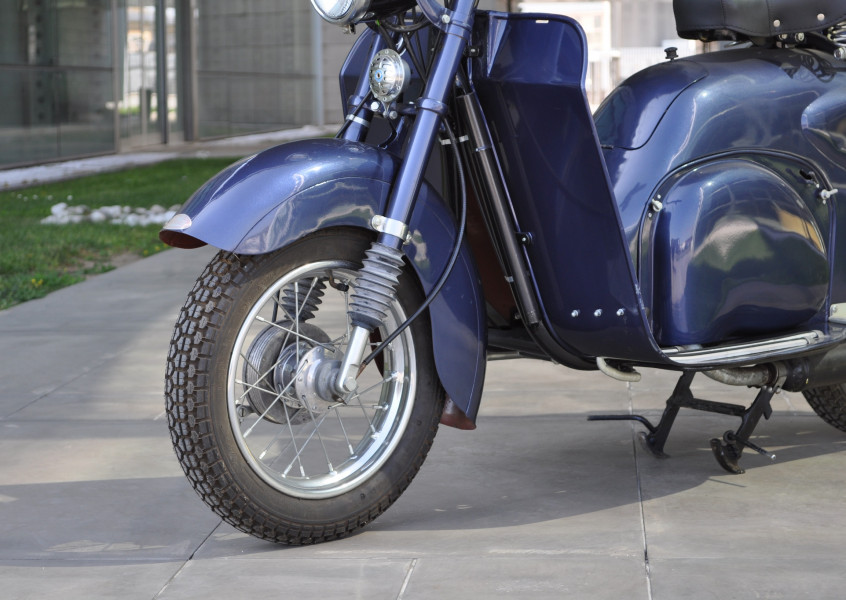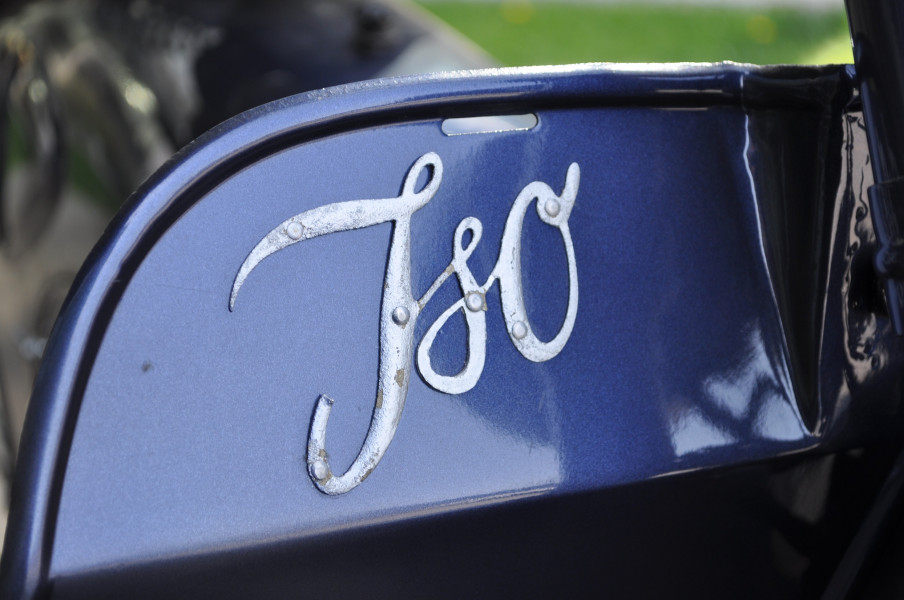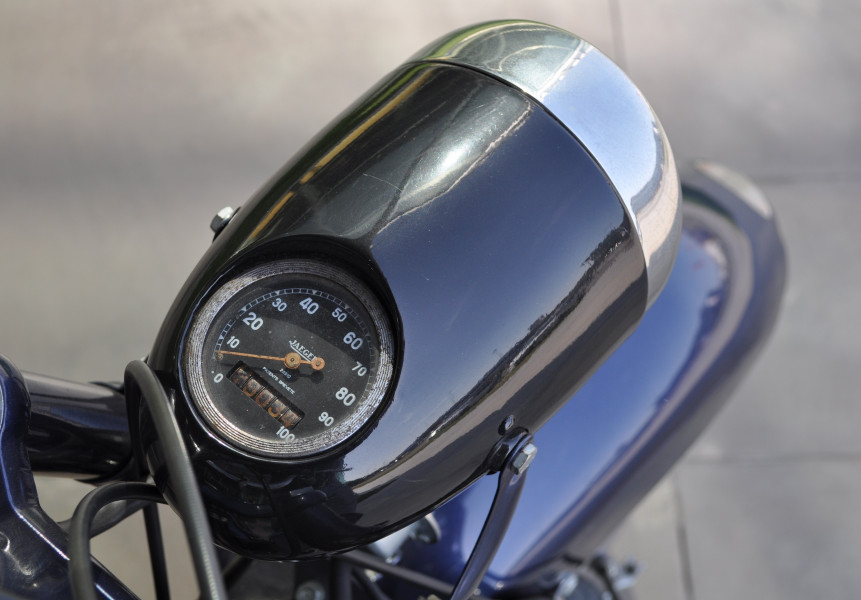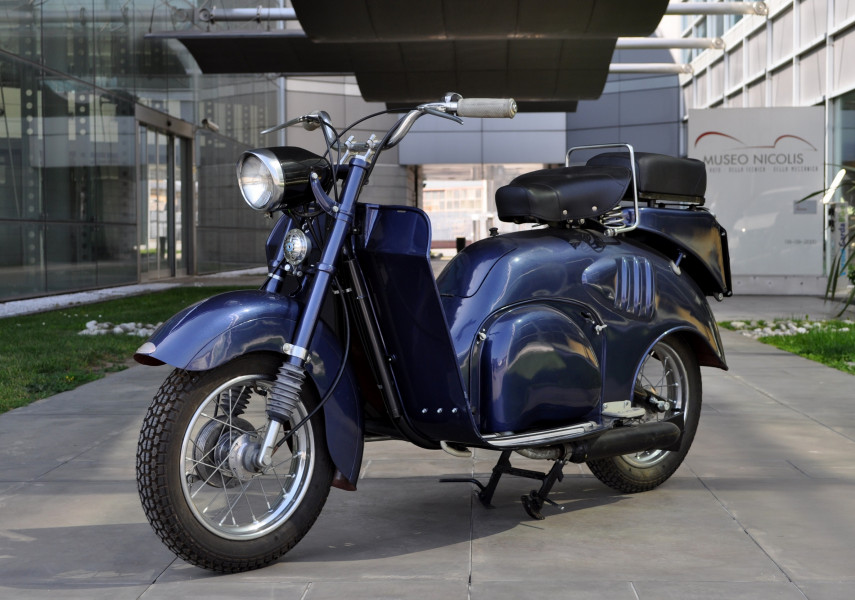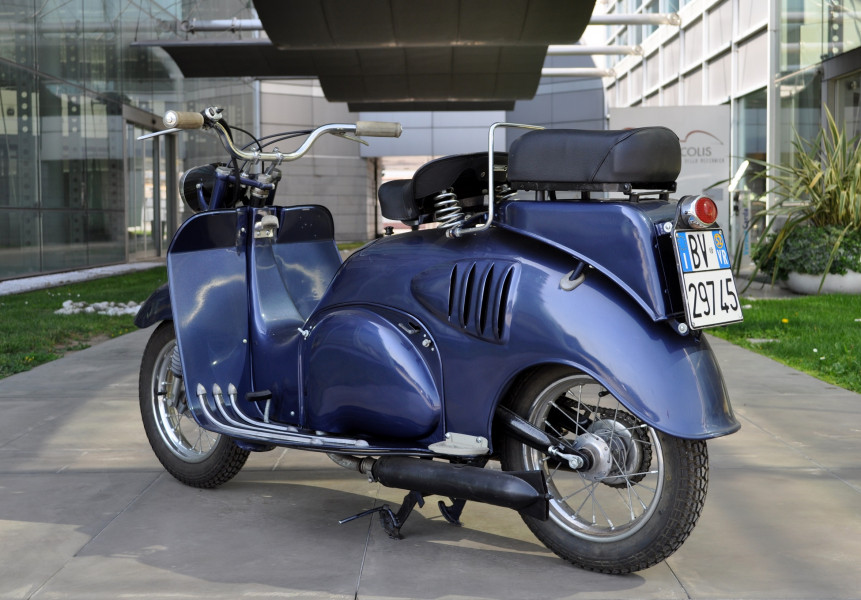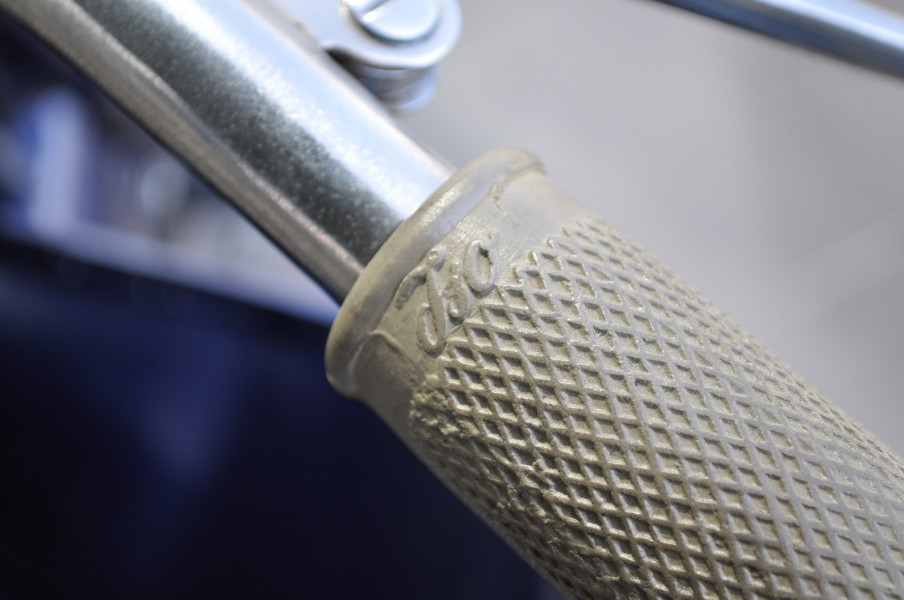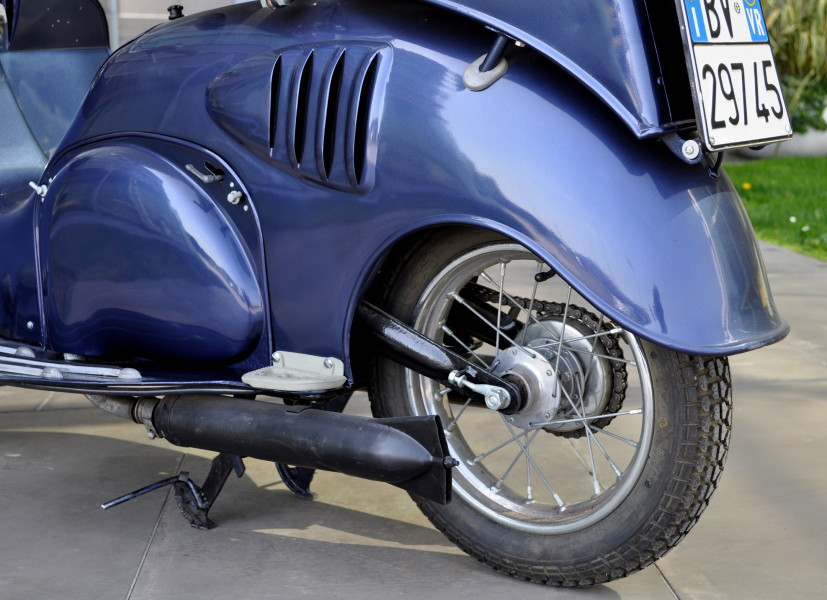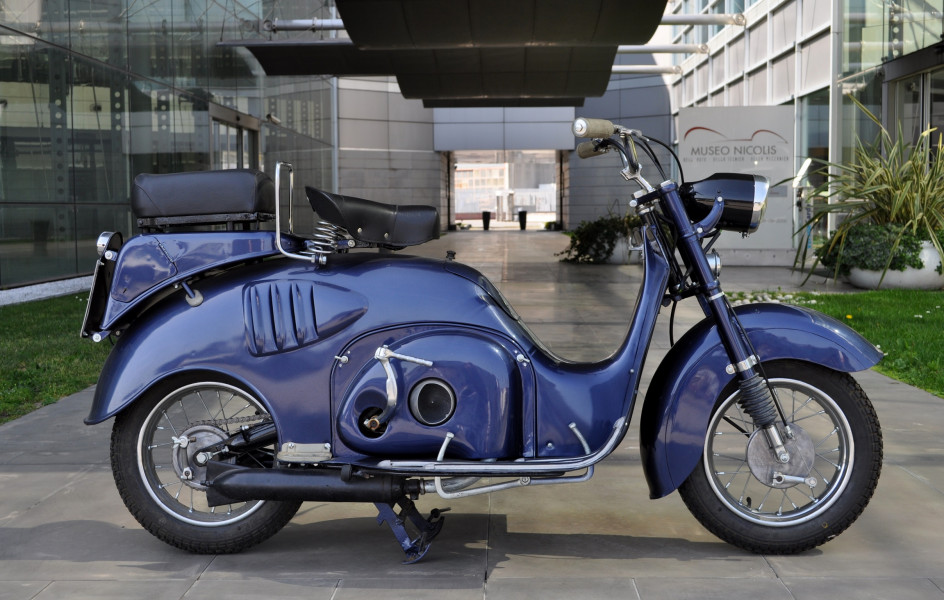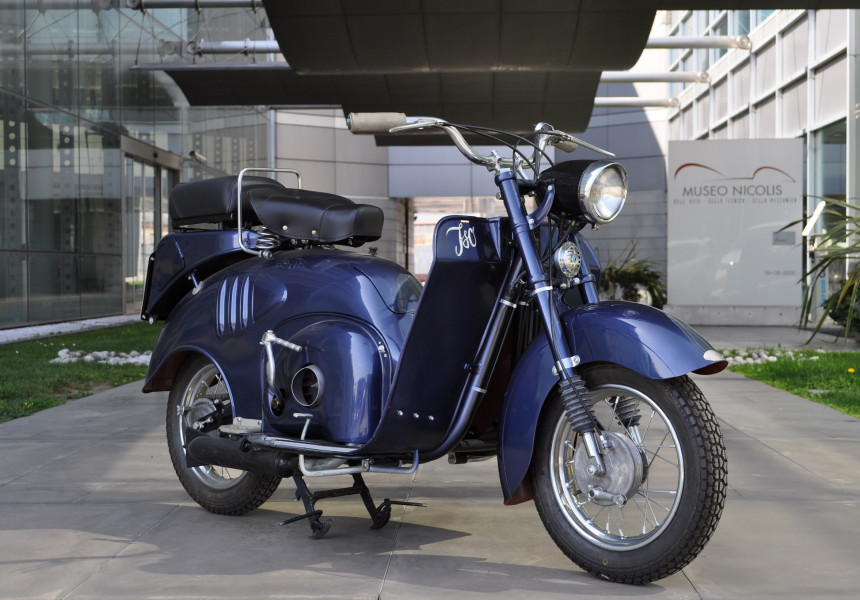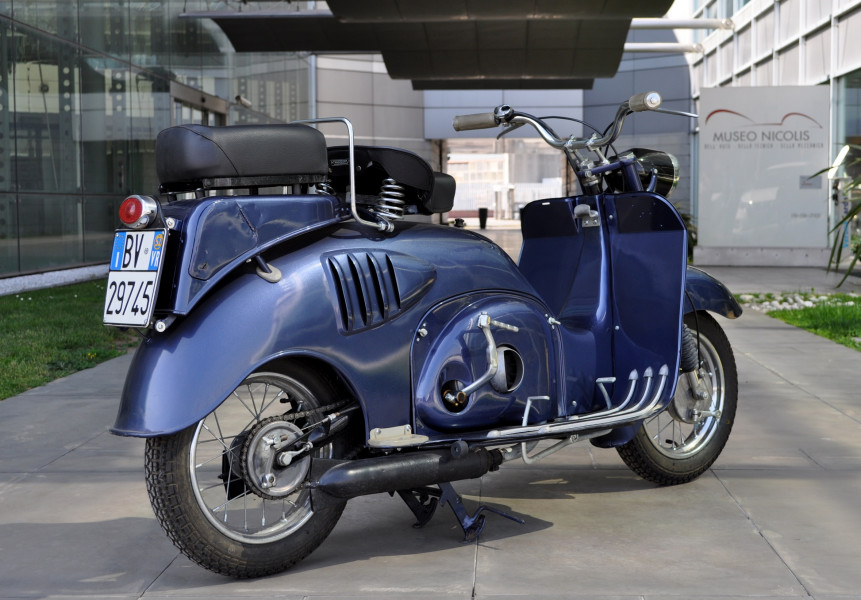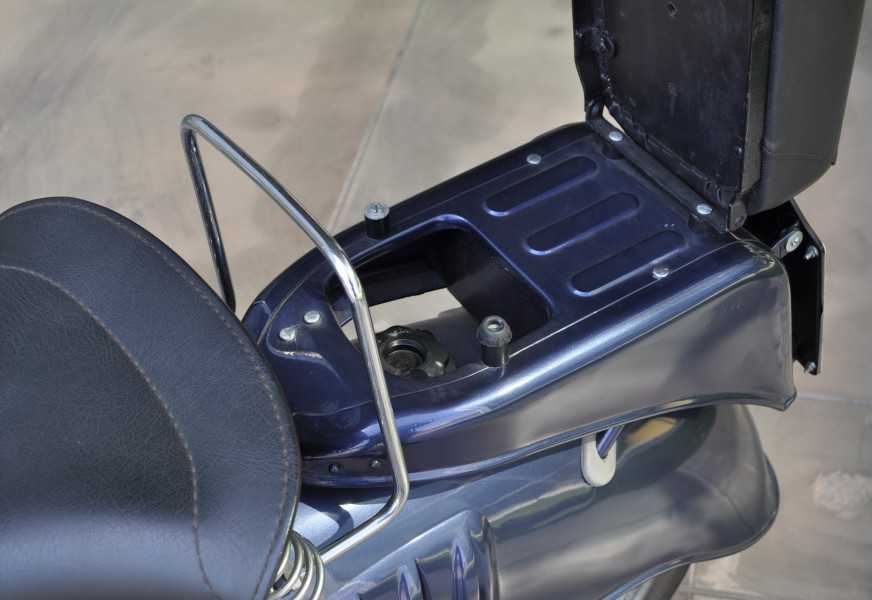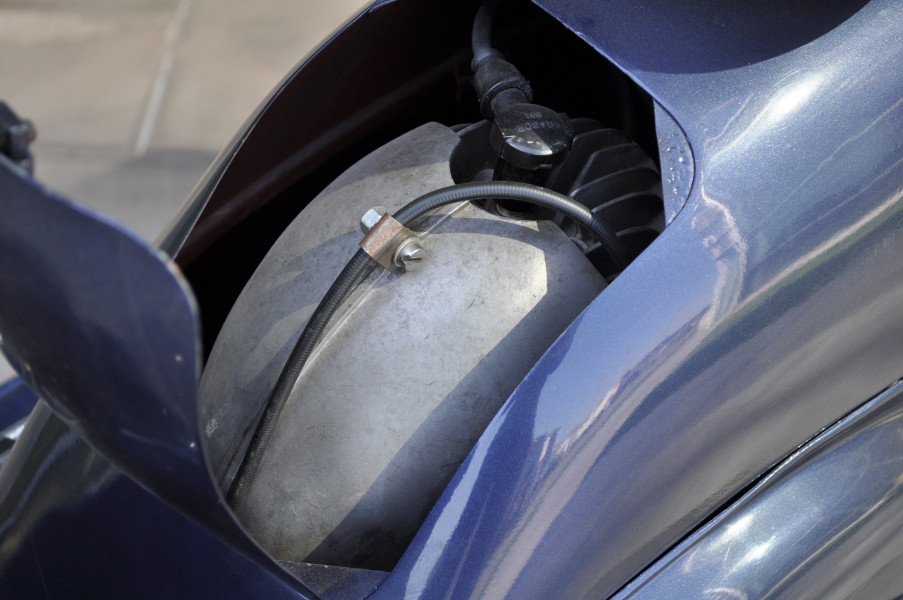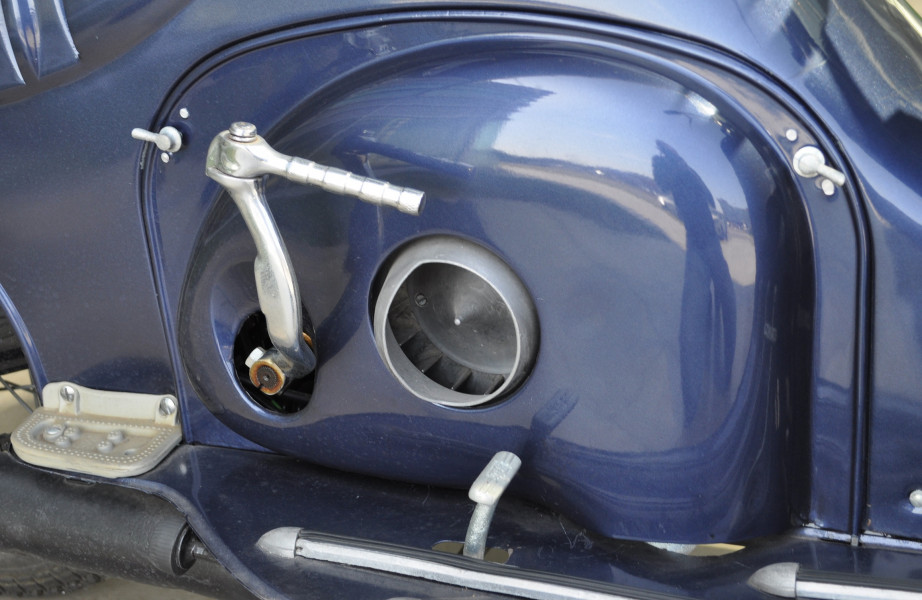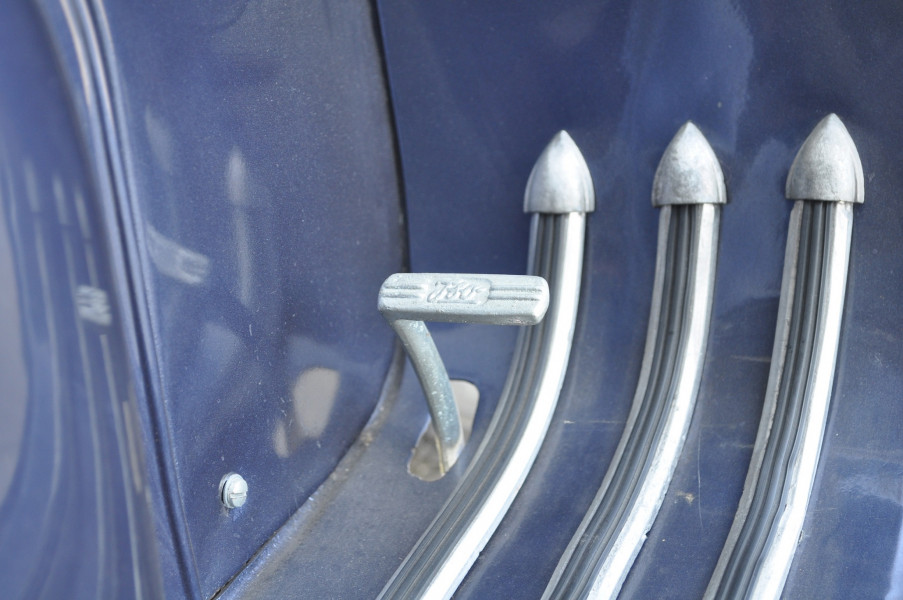Iso, 1952, Isoscooter
Iso Isoscooter, 1952, Italy
All the factories that survived WWII, after the military orders stopped, had to radically reorganize their production.
Despite the competition, one of the most restless sectors was the cheap mobility one: these are the years when Piaggio launched the Vespa and Innocenti the Lambretta.
Isothermos, heater and refrigerator maker, was not long in coming and started studying its scooter, called the Furetto, that did not reach the performance expected though, being replaced in 1949 by a new project, the Iso 125, commonly known as Isoscooter.
It was powered by a split-single cylinder engine inspired by Puch, 125 cc of displacement, that produced 7 hp, a higher power output than the rivals.
Higher was the price too, reaching 175.000 lire, a number that did not stop the commercial success of the Isoscooter. A "naked" version was also made, without fairing, called Isomoto.
In 1952 the company name changed into Iso Autoveicoli SPA for the imminent launch of the new Isetta, microcar that didn't have much success in Italy but it will in Germany, built under license by BMW.
In 1957 the production of motorcycles and microcars stopped to focus on the new production of GT cars with the Iso Rivolta brand.

